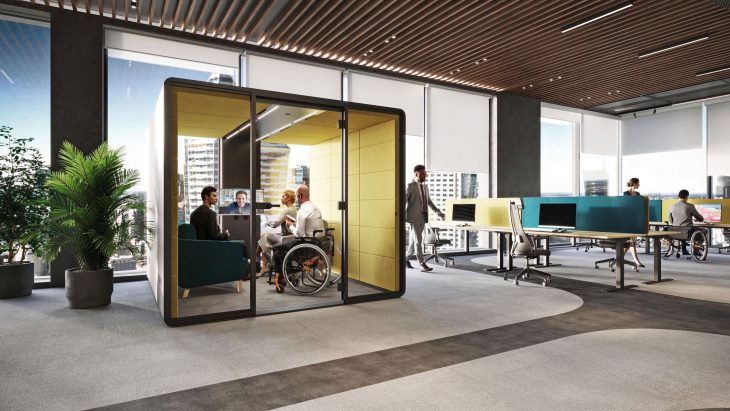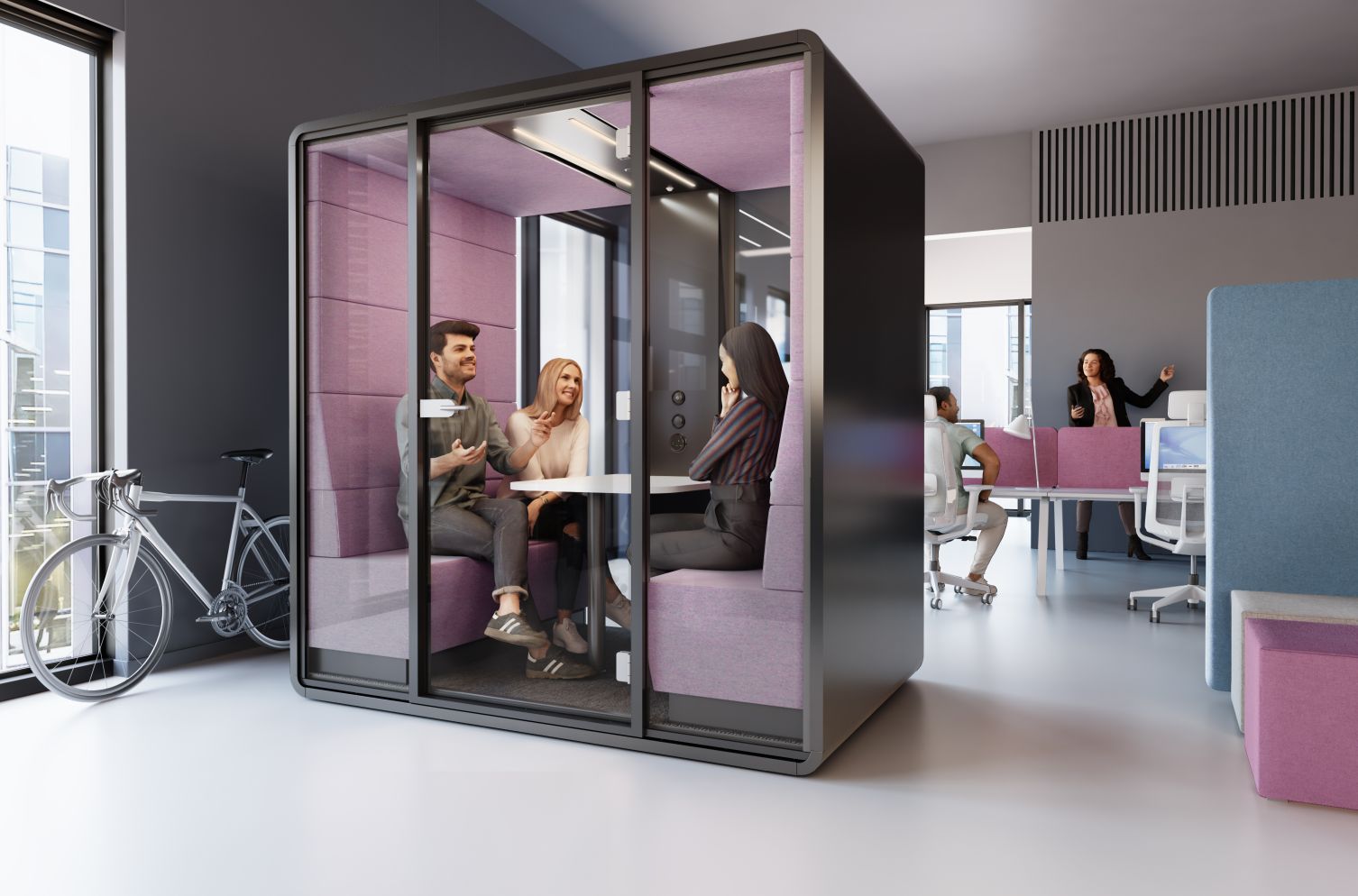
Designing offices for the hybrid mode of work responds to the rapid transformation of our work models which has been accelerating recently. Remote work modes seemed – until not so long ago – to be an exclusive right, barely used by those working full time, and most of the time at their office desks. Telecommuting was mainly reserved for the self-employed or those contracted directly. But that previous work model approach changed fundamentally with the onset of COVID-19. What is, therefore, the right way to design adaptable hybrid workplace in line with latest requirements?
Understand what your staff need
It is possible to change the workplace so that it will attract your staff if you find out specifically what your teams expect. Recent problems with telecommuting have shown that those working from home are frequently dissatisfied with the lack of comfort and effectiveness. They face multiple forms of frustration caused by imperfect collective work platforms, little possibility to exchange resources and finding it difficult to ensure high quality team collaboration.
Given these shortcomings, work spaces must provide staff with conditions that their home offices do not, such as nearby areas designed for smooth teamwork and idea exchange. Embracing customizable tools like portable partition walls and adaptable desks allows for creating offices that cater to a wide range of expectations and work models.
Customizable furnishing module systems
The hybrid mode of work primarily involves customization. This is why equipping the workplace with easily-adaptable tools to adjust to versatile work modes will be worthwhile. Designing flexible offices calls for the use of portable systems like Hushoffice acoustic pods and multimedia walls fitted with casters. You will be able to reset your work environment in a smooth and effective manner to customize it according to your changing demand.
Consider using the hushMeet acoustic work and meet pods in order to ensure discreet and comfortable environment for your meetings and avoid the need for regular conference rooms. The cabins come with sound-absorbing capacity that complies with applicable standards both for meetings on business or unofficial discussions. They are portable, so bringing them to another location in your workplace to suit your team is effortless indeed.

Zones and noise levels in the workplace
The hybrid mode of work must involve the synergistic integration between a variety of office zones. Also, you need to provide for optimized sound parameters in every such zone. The successful arrangement of a workplace will ensure that all adjacent zones consolidate one another in terms of their functioning, without any disruption to work done by employees.
The areas that are to support discussions, quiet work and teamwork should be specially designed after considering their respective sound specifications required. Regarding the zone created for talks, you should prioritize the privacy of speech. Here, sound-absorbing partitions and office pods will help in achieving the effect you want. In contrast, the zones arranged for the purposes of impromptu communication will make more friendly settings if some background noise is heard in them.
Designing all these areas in terms of sound specifications requires precision in order to support their principal functions, which means providing high soundproofing at intense concentration zones and controlled volumes of ambient hum at collaborative zones.
Technology as a link between telecommuters and stationary employees
It is of great importance that corporations design both stationary and remote meeting spaces in the way that guarantees they will succeed in organizing them. Not only managers but also employees need meeting environments where privacy is secured. Such spaces help interact on a regular, face-to-face basis, discuss private matters and exchange ideas.
One of routine professional tools, video-conferences deserve isolated hushed rooms for online meetings created in the open-plan office. Team members can thus avoid holding large conference rooms to talk one-on-one. The compact hushHybrid acoustic phone booths will prove a perfect solution for this purpose. Not only will they work very well during lengthy video-conferences, but also provide the perfect environment for quick calls to customers or team-mates.
Dedicated socialization and interaction zones
A necessary component to make the hybrid work flow, frequent and free interaction with others is made possible thanks to improved community areas. Regular personal conversations foster better understanding between team members, creating a welcoming, reliable environment. They offer the ways of building relations and working collectively that are hard to obtain during online communication.
Plans for a hybrid workplace must not overlook any special conditions that neurodiverse people and introverts might need. It is worth stressing that the factors that hinder their optimal performance include noise pollution and a requirement to keep interacting with others. These employees will find a suitable environment to meet and work in deep focus inside acoustic pods.
Hybrid workplaces provide a diversified range of zones for various needs
Corporations looking to restore their staff involvement have started to diversify their offices with furniture and the upgrades of, for example, chillout zones, immersive spaces, collective work areas and other facilities. They take these steps to increase their care for a vast array of workforce needs like social interaction, focused work and innovativeness. Hybrid workplaces should be made an environment which employees want to come back to, feeling that their particular requirements are addressed.
Was this page helpful?
Our commitment to delivering trustworthy and engaging content is at the heart of what we do. Each fact on our site is contributed by real users like you, bringing a wealth of diverse insights and information. To ensure the highest standards of accuracy and reliability, our dedicated editors meticulously review each submission. This process guarantees that the facts we share are not only fascinating but also credible. Trust in our commitment to quality and authenticity as you explore and learn with us.


